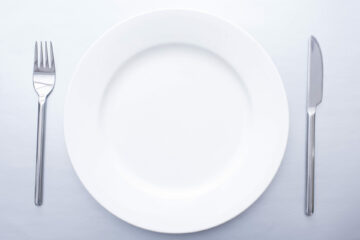We work hard on establishing healthy eating habits for the long term, though this can be disrupted by changes when we go a holiday, road trip or business trips. Often at these times, situations can feel fast-paced, therefore healthy eating and wellbeing can be easily over-looked!
However, taking care of ourselves when we are away from home is vital, and that the sense of ‘there’s not much we can do about what we eat on these trips’ is not quite true. Continue reading to find some tips to help you maintain a healthier eating pattern on the road.
Travelling with a‘mini fridge’
If you are going on a family trip in your own car, it’s handy to keep some snacks nearby. Packed snacks at the petrol stations can be tempting, especially when everyone is hungry! So our first tip is to prepare your own snacks and lunch boxes in advance. If there is enough space in the boot, you can consider fitting an ice box in there. Nothing too fancy, but perhaps a large-sized thermal box with some ice cubes/cooler packs in it. And the next thing you know? You’ve got a mobile fridge with you on the road! There are many items you can fit in there, such as your own drinks, packages of salads, a variety of yoghurts as well as sauces like guacamole. The magic of this simple implementation is that it gives you more control over what to have during your trip, and once you are more aware of your choices, you are likely to go for healthier options. The bonus that comes with it is that you can save some money not having to buy food and drinks off the road.
In addition to the options mentioned above, here are more food choices to bring with you:
- You can never go wrong with fresh fruits. Although they will instantly become more perishable once washed or sliced, they can last long enough in your mini fridge.
- For a savoury snack, string cheese or Babybel could be an excellent choice. Cheese provides a range of nutrients including calcium, iodine, fat and protein. Be mindful of overall portions due to the fat content.
- Some peanut butter on whole grain bread can make a quick breakfast, and try to also have fruits or vegetables to go with it.
- As for the drinks, stick to water where possible. If you want something a bit more interesting, could you add sliced fruits to the water, producing a naturally sweet flavour. You could also try the low-calorie water flavouring sachet/drops. Sparkling water may be more appealing to you, and don’t forget your cup of tea. At the end of the day, if any of these tricks are going to help you stay better hydrated by drinking 6-8 glasses of fluids a day, it’s all worth the effort.
Service station/supermarket choices
You may pass a number of different service stations or supermarkets that have various options – have a look out for choices that provide a combo meal, containing a sandwich (with a good protein and salad filling) and a side such as cheese & grapes, or hummus & carrots. Try to stick to water as your choice of drink. This would be more balanced compared to choosing a sandwich and crisps or chocolate bar, and a soft drink.
Some restaurant chains commonly found at service stations such as Pret a Manger also have some great balanced choices!
If you find that there are no service stations or supermarkets on the road, try a drive through fast food place but change up the options a little – instead of getting a meal that comes with a burger, chips and soft drink, opt for a sandwich or burger with a side of fruit and water to drink.
The traffic light labelling system
When you walk into a convenience store and look for snacks, there are a few things to look out for at the first sight of a product.
Have you ever heard of the ‘traffic light labelling system’, or have you seen something like this? This has become a mandatory part of front package labelling rules for most foods on the UK market since 2014. The fat, saturated fat, sugar and salt contents of foods are labelled with one of the three colors: green, amber and red. Green means the food is low in that certain nutrient, while red means it contains a high amount of one of these nutrients. Hence when choosing any snacks, ready meals or other foods, this can give you a good clue of what may be better choices for nutrition. However, this particular labelling system does not tell you everything. For example, you could get a white bread roll with very low sugar/fat/salt, but it can be higher in calories and still does not give you many nutrients that you need. The nutrients table at the back of the package is more comprehensive including the fibre content of the food, so be sure to check out that as well.
Non-perishable snacks
Here are a few of our favourite snacks you can keep with you on the go, if you do not have access to a fridge.
- A small bag of nuts such as almonds and pistachios contain protein, fibre and fat- the three most important food groups to give you longer satiety. These nuts also contain omega-3, which is good for heart health and has been proven to reduce cardiovascular disease. Nuts are high in fats overall, so again it is important to be mindful of the overall portion you consume. You can buy individual mini packs, or divide them into mini bags for the journey. When selecting nuts from supermarket shelves, try to get the no added salt or sugar options.
- If you’d rather enjoy some sweet snacks, some granola bars and dark chocolates can be healthier choices. Dark chocolate contains less sugar hence fewer calories than milk chocolate and it is also richer in antioxidants than its counterparts. All of these options can give you a boost of energy when you are tired, and generally have more health benefits than sports drinks and vitamin waters, which are often high in added sugar.
Conclusion
Even though it may not feel like this at first, we can utilise a range of healthy eating tricks to lead us to informed choices of foods and drinks we consume on the go. Preparation in advance is the key, if you would rather go for grocery store options, the traffic light labels can prove really useful.
To help you further with eating on the go, why not try a virtual consultation with one of our UK dietitians?
By Rutian Ding, Dietetic student, revised by Reema Patel, Registered Dietitian at Dietitian Fit & Co
Reference list
Food Standards Agency (2020). Check the label. [online] Food Standards Agency. Available at: https://www.food.gov.uk/safety-hygiene/check-the-label [Accessed 12 Aug. 2022].
Government Digital Service (2012). Food labelling and packaging. [online] GOV.UK. Available at: https://www.gov.uk/food-labelling-and-packaging/food-labelling-what-you-must-show [Accessed 13 Aug. 2022].
ifoodbag AB. (2022). Insulated thermal bag and boxes for chilled & frozen food –. [online] Available at: https://ifoodbag.com [Accessed 12 Aug. 2022].
James, A., Lawrence, B. and O’Connor, M. (2022). Healthy Eating as a New Way of Life: A Qualitative Study of Successful Long-Term Diet Change. INQUIRY: The Journal of Health Care Organization, Provision, and Financing, 59, p.004695802210903. doi:10.1177/00469580221090397.
NHS (2019). Eat well. [online] nhs. Available at: https://www.nhs.uk/live-well/eat-well/ [Accessed 13 Aug. 2022].
Ziauddeen, N., Almiron-Roig, E., Penney, T.L., Nicholson, S., Kirk, S.F.L. and Page, P. (2017). Eating at Food Outlets and ‘On the Go’ Is Associated with Less Healthy Food Choices in Adults: Cross-Sectional Data from the UK National Diet and Nutrition Survey Rolling Programme (2008-2014). Nutrients, [online] 9(12), p.1315. doi:10.3390/nu9121315.







